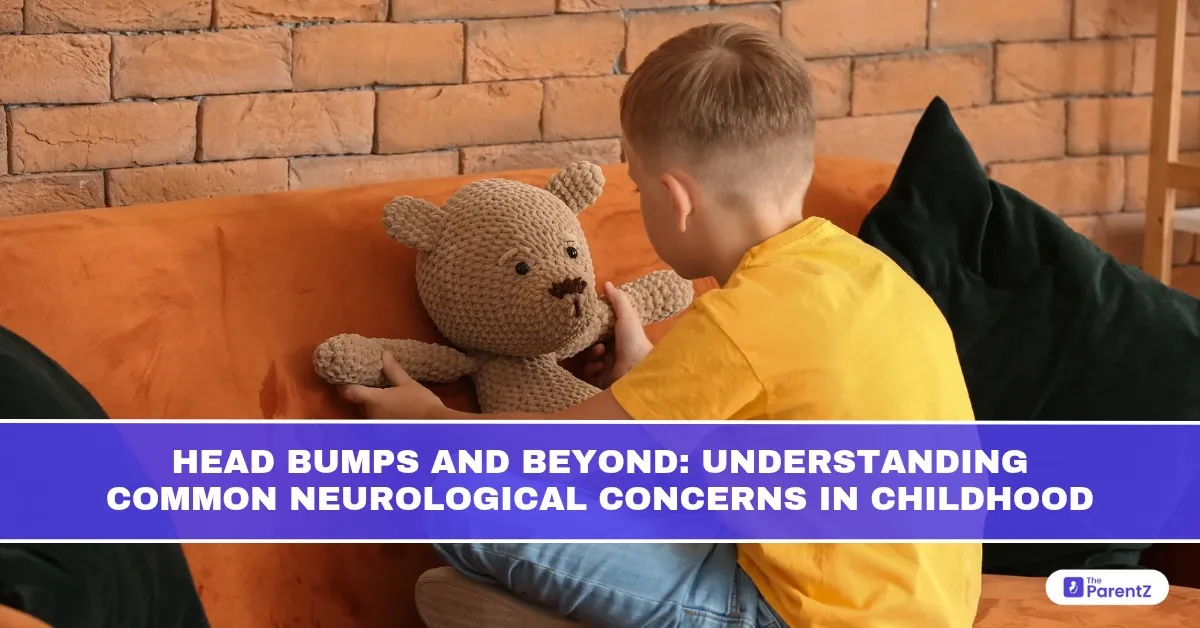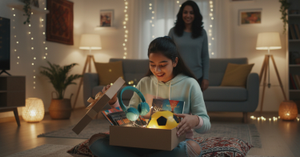Children are naturally active, curious, and fearless, traits which often lead to tumbles, head bumps, and occasional injuries. Most of these incidents are minor and resolve on their own. However, some head injuries or unusual behaviors may signal deeper neurological concerns that should not be ignored.
This article provides an overview of common neurological issues seen in childhood, how to differentiate benign incidents from potentially serious conditions, and when it’s time to consult a pediatric neurologist.
Everyday Head Bumps: What’s Normal?
Minor head bumps are part of childhood. These usually occur during play, falls from low heights, or accidental collisions. In most cases, the child cries immediately, may develop a small swelling (like a “goose egg”), and returns to normal activity within minutes to hours.
Typical signs of a minor head bump include:
- No loss of consciousness
- Crying immediately after the fall
- No vomiting or only one episode shortly after
- Alertness and normal behavior after a short rest
- A small bruise or swelling on the scalp
These signs suggest that the injury is superficial and not affecting the brain. However, not all bumps are this simple.
Warning Signs After a Head Injury
Parents and caregivers should watch for certain red flag symptoms after a child sustains a head injury. These may suggest a concussion, skull fracture, or internal brain injury:
- Loss of consciousness, even for a few seconds
- Persistent vomiting (more than once)
- Severe headache that worsens over time
- Drowsiness or difficulty waking up
- Unusual behavior or confusion
- Seizures or abnormal movements
- Fluid or blood leaking from the nose or ears
- Unequal pupil size or vision changes
- Difficulty walking, slurred speech, or loss of balance
If any of these symptoms occur, immediate medical attention is essential. In some cases, a CT scan or MRI may be required to assess the extent of the injury.
Beyond Injuries: Common Pediatric Neurological Conditions
While head injuries are often the focus of concern, many neurological conditions in children present without any trauma. Here are some common non-injury-related neurological concerns:
1. Seizures and Epilepsy
Seizures in children can be dramatic or subtle. Symptoms may include sudden staring spells, stiffening of the body, jerking movements, or sudden loss of awareness. Epilepsy is diagnosed when seizures occur repeatedly without an obvious cause, like fever or injury.
2. Developmental Delays
Delays in achieving milestones such as walking, talking, or sitting may point to underlying neurological or muscular issues. Early detection is critical to initiate therapies and interventions that support optimal development.
3. Headaches and Migraines
Frequent headaches in children can sometimes be due to migraines, which may include nausea, sensitivity to light or sound, and visual disturbances. While common, chronic, or severe headaches require evaluation to rule out neurological causes.
4. Tics and Involuntary Movements
Motor or vocal tics, including repetitive blinking, throat clearing, or jerking motions, may appear in childhood. While many are benign and transient, persistent or disruptive tics should be assessed for conditions like Tourette syndrome.
5. Behavioral or Attention Issues
Attention Deficit Hyperactivity Disorder (ADHD), autism spectrum disorders, and learning disabilities often overlap with neurological development. A thorough neurological evaluation may help clarify the cause of behavioral concerns.
6. Muscle Weakness or Coordination Problems
Difficulty in running, frequent falls, or complaints of weakness may indicate a neuromuscular disorder. Conditions such as muscular dystrophy, cerebral palsy, or inherited neuropathies often begin in early childhood.
When to See a Pediatric Neurologist
A pediatric neurologist specializes in diagnosing and managing conditions affecting the brain, spine, and nerves in children. Consider seeking neurological evaluation if a child has:
- Repeated or unprovoked seizures
- Significant delays in speech or motor skills
- Chronic headaches or head pain that disrupt daily life
- Changes in behavior, attention, or academic performance
- Difficulty with coordination, walking, or muscle strength
- Persistent dizziness or balance issues
- Unusual movements or tics that do not resolve
Diagnostic Tools in Pediatric Neurology
To assess neurological health, the doctor may recommend:
- MRI or CT scans to visualize the brain and spinal structures
- Electroencephalogram (EEG) to study brain wave activity, especially in seizure disorders
- Blood tests for metabolic or genetic conditions
- Developmental assessments to understand cognitive and motor skills
What Parents Can Do
Parental intuition is a powerful tool. When something feels “off” about a child’s behavior, development, or response after an injury, it’s important to act.
Here are steps parents can take:
- Monitor closely after any head injury, even if it seems minor
- Keep a symptom diary to track patterns of headaches, behavior changes, or motor issues
- Support early intervention for developmental delays through therapy and rehabilitation
- Avoid dismissing complaints, even if they seem vague or inconsistent
- Stay informed, and don’t hesitate to ask for a specialist’s opinion
Conclusion
Most head bumps and neurological symptoms in children are benign and self-limited. However, being able to distinguish what’s normal from what’s not is essential for timely care. Whether it’s a bump on the head, a delay in speech, or an unexplained seizure, early evaluation by a pediatric neurologist can lead to better outcomes and peace of mind for families.
Understanding your child’s neurological health begins with awareness and trust in both your instincts and the medical support available to guide you.








Be the first one to comment on this story.